Weird Animals - Top 10 Bizarre African Animals

This list contains some very weird animals that live on the African continent. They are pretty fascinating seeing that they are not the animals you often hear about. You will not find many documentaries or articles about them because they keep themselves hidden in the forests.
10 Bizarre Animals In Africa
You will have to go look for them and even then that does not mean you will find them. If you happen to come upon one of them, count yourself lucky well anyone of them except the bush viper, though beautiful it might be.
#10 - Colobus Monkey
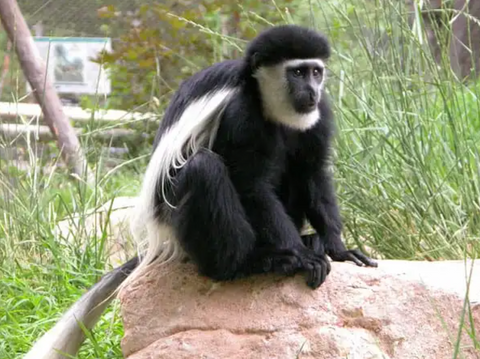
The black and white Colobus monkeys spend its days and nights in the tree tops of Africa’s closed forest. They live in groups of 5-10 with one adult male serving as the head of the group. What make this animal weird is that it comes with a full grown beard and long white hair along their backs.
Another fact is that they are the only monkeys without a thumb. The long white hairs help them to jump from one tree to another in the forest. They use a croaking roar to communicate with each other.
Their diets are made up of mostly leaves and unlike other monkeys; they are able to eat poisonous leaves. Their stomachs enable them to digest poisonous leaves with no harm coming to them.
#9 - Shoebill
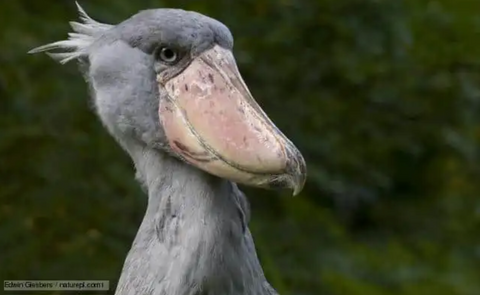
No, that is not your principal reprimanding you for something you did not do. What you are looking at is the Shoebill bird named after its clog-shaped bill. The shoebill’s imposing look makes it one of Africa’s very weird animals.
The shoebill bird or shoe-billed stork wades in and around the swampy areas of the White Nile in northeastern Africa. Standing at 115 cm tall, its grey feathers, long legs, broad wings and severe demeanor serve to distinguish it from other birds.
It produces a loud, hollow sound it by clapping the mandibles of its bill together. The Shoebill feeds on a diet of lungfish, its favorite, young crocodiles, fish and turtles.
#8 - Honey Badger

The honey badger is native to Africa, Southwest Asia and the Indian subcontinent. Long, white hair coats the back while short black fur lines the underbelly.
It turns angry very quickly and is always ready for war no matter the size of his opponent; lions, snakes or humans. Built like a wrestler, the honey badger is thick-set with short, sturdy legs with five toes and sharp claws.
It has really loose skin that allows the badger to easily twist and turn within it. The skin is also very thick and almost impenetrable. They hunt alone are in pairs.
Their favorite food is of course bee honey but they pretty much eat everything; frogs, humans, snakes, fruits, vegetables. Their skin’s ability to stretch about 6 inches from their body and makes them pretty weird.
#7 - Bush Viper

If you are attracted to pretty things then you might be extremely tempted to run your hand along the back of this beautiful creature. Atheris, commonly known as bush vipers, are venomous snakes found in tropical sub-Saharan Africa.
Adult atheris sizes range from 16 inches to 31 inches. They are covered in scales and come in a variety of colors. They spend most of their time in trees. Bush vipers feed on lizards, rodents, bird, amphibians and other snakes.
Though beautiful, a bite from a bush viper can be fatal. Persons bitten may develop blood clots, swelling and experience severe pain then die. So if you happen upon one of these snakes, though high unlikely, do not be deceived by its beautiful exterior
#6- Aye-Aye
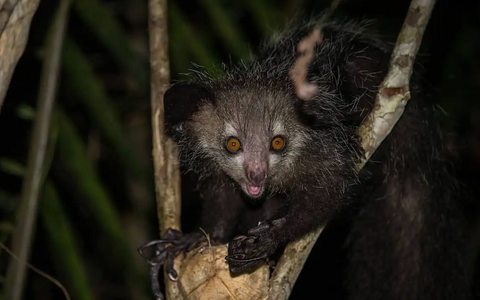
Aye-aye, no I am not trying to get your attention. I am just introducing you to the Aye-aye, a primate found only on Madagascar. A surprising fact this weird looking animal is related to chimpanzees, apes and wait for it, humans. Aye-ayes have big eyes and equally big ears. They may be either dark brown or black.
They live in rain forests and move around during the night. Aye-ayes hunt for food by tapping with its long middle on tree barks then listen for insect larvae underneath. The same middle finger and scoop flesh from coconuts and other fruits.
In Madagascar, an aye-aye is bad luck and are killed when sighted. This has led to them becoming endangered and protected by law.
You might like: Facts About Madagascar
#5 - Dik-Dik
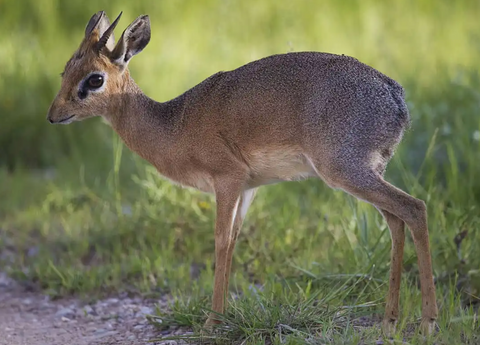
Is this a deer or a baby goat? Nope it is a species of small antelopes called dik-dik. Dik-diks inhabit the savannas and bush lands of eastern and southern Africa. They have a dust-colored coat which makes them undetectable in the bush lands.
Their elongated snouts serve as AC units when they are very hot. Blood is pumped though the snout, then excessive panting and evaporation coos it. After this it is re-circulated in the body.
The females are the larger sex. Females make a dik-dik call to alarm others of predator. Their diet consists of foliage, leaves, fruits, shoots and berries.
In turn they are food to animals like lions, hyenas, leopards and cheetahs. To help protect themselves, dik-diks have excellent eye sight and run very fast.
#4 - Lowland Streaked Tenrec

If you want to see bizarre animal, Madagascar must be the place to go. This is the lowland streaked tenrec found in the lowland rain forests of Madagascar. They live in groups in burrows.
They have long snout and long limbs. Sharp quills cover a black coat with yellow stripes. Their diet consists of mostly earthworms and other invertebrates. When threatened, the streaked ternrec drives the barbed quills found on its back and on the crest around its head into its attacker.
The only mammal known to use stridulation, the unbarbed quills in the middle of the bank, when vibrated produce a faint chattering sound used to communicate with other tenrecs.
#3 - Okapi
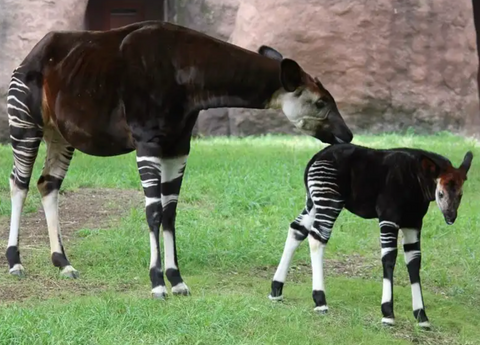
The Okapi looks like a science experiment gone wrong. Although it might look like it is closely related to the zebra, okapis are in fact relatives of the giraffe. Like giraffes, its long neck makes up most of its 8.2 ft tall height.
It has a chocolate coat with horizontal stripes and rings on the legs and white ankles. The few remaining okapis roam the forests of the Democratic Republic of the Congo.
They feed on leaves, buds, grasses, fruits and fungi. They do not produce much sound other than occasional chuffs and infants bleat when they are under stress. Their main predators are leopards and humans.
#2 - Aardvark
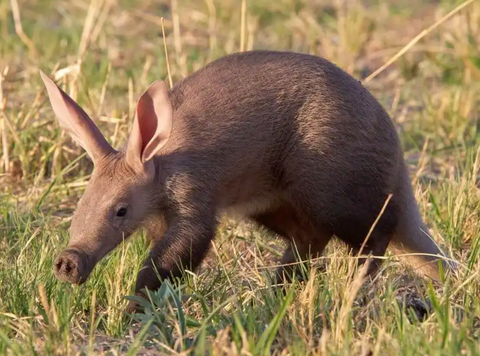
Aardvarks looks like small pigs with just longer snouts, don’t you think? Their name in Africaans means “earth pig.” They have body parts found on pigs, kangaroos, rabbits but genetically they are not linked to any of these animals.
It is however related to the tenrec. Aardvarks spend their days in the burrows they dug with their feet and claws underground. At night, they roam grasslands and forests in search of termites and their favorite, ants.
No wonder the call them antbears. When they find a mound, they dig through it with their front claws and use their long, sticky, worm like tongue to pull these termites in their mouths.
#1 - Pangolin
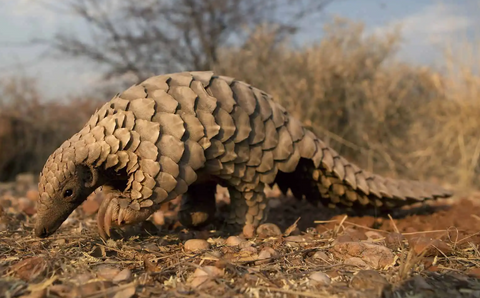
Pangolins can be found in woodlands and savannas of Southern, Central, and East Africa. They are covered in scales made from keratin. They use their acute sense of smell to hunt for termites and ants during the night.
Like the aardvark, it uses its long tongue on which the termites stick to get to the ants and termites. When they feel threatened they roll themselves into balls. The scales are extremely sharp and are able to cut their attackers.
You may have never heard about the pangolin but it is the most trafficked animal in the world. Poachers hunt it for its meat and scales. In Asia, its meat is a delicacy and its scales according to Asians have medicinal properties.
Keep reading: 10 Mysterious Monsters of Africa

